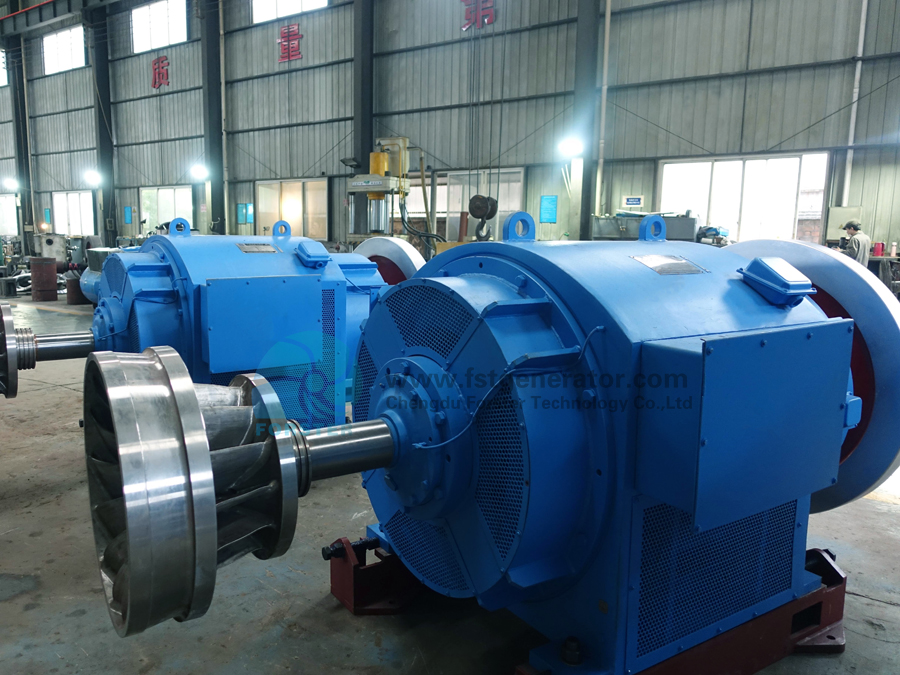Hydropower is the process of converting natural water energy into electrical energy using engineering measures. It is the basic way of water energy utilization. The advantages are that it does not consume fuel, does not pollute the environment, the water energy can be continuously replenished by precipitation, the mechanical and electrical equipment is simple, and the operation is flexible and convenient. However, the general investment is large, the construction period is long, and sometimes some flooding losses are caused. Hydropower is often combined with flood control, irrigation, shipping, etc. for comprehensive utilization.
There are three types of hydroelectric power generation:
1. Conventional Hydroelectricity
That is, dam-type hydropower, also known as reservoir-type hydropower. A reservoir is formed by storing water in a dam, and its maximum output power is determined by the difference between the volume of the reservoir and the position of the water outlet and the height of the water surface. This height difference is called the head, also called the drop or head, and the potential energy of the water is proportional to the head.

2. Run-of-the-river hydroelectricity (ROR)
That is, stream-flow hydropower, also known as run-of-river hydropower, is a form of hydropower that uses water power but only requires a small amount of water or does not need to store a large amount of water to generate electricity. Stream-flow hydroelectricity requires almost no water storage, or only a very small water storage facility, which is called a conditioning pool or forecourt when a small water storage facility is built. Due to the absence of large-scale water storage facilities, stream-flow power generation is very sensitive to seasonal changes in the amount of water used in water sources, so stream-flow power plants are usually defined as intermittent energy sources. And if a regulating pool is built in the Chuanliu power plant that can adjust the water flow at any time, it will be used as a peak-shaving power plant or a base-load power plant.
3. Tide power
Tidal power generation is based on the rise and fall of ocean water levels caused by tides. Generally, reservoirs are built to store electricity, but there are also direct use of water flow generated by tides to generate electricity. There are not many places in the world suitable for tidal power generation, but eight in the UK are estimated to have the potential to meet 20% of the country’s electricity needs.
Of course, the three types of hydropower generation are conventional hydropower stations, and there is another type of power station, the Pumped Storage Power Station, which generally utilizes the excess electricity in the power system (flood season, holiday, or low valley electricity in the second half of the night). ), the water in the lower reservoir is pumped to the upper reservoir for storage; when the system load peaks, the water in the upper reservoir is put down, and the turbine is driven by the turbine to generate electricity. It has the dual function of peak shaving and valley filling, and is the most ideal peak shaving power supply for the power system. In addition, it can also regulate frequency, phase, voltage and serve as a backup, which plays an important role in ensuring the safe and high-quality operation of the power grid and improving the economy of the system.
The pumped storage power station itself does not generate electricity, but plays a role in coordinating the contradiction between power generation and power supply in the power grid; it has a huge role in peak regulation during short-term load peaks; the start-up and output changes rapidly, which can ensure the power supply reliability of the power grid and improve the power grid. power quality. Now it’s not classified as hydropower, but electricity storage.
As of now, there are 193 hydropower stations in operation with an installed capacity of more than 1,000 MW in all countries in the world, and 21 are under construction. Among them, there are 55 hydropower stations with installed capacity of more than 1,000MW in operation in China, and 5 are under construction, ranking first in the world.
Post time: Sep-14-2022
